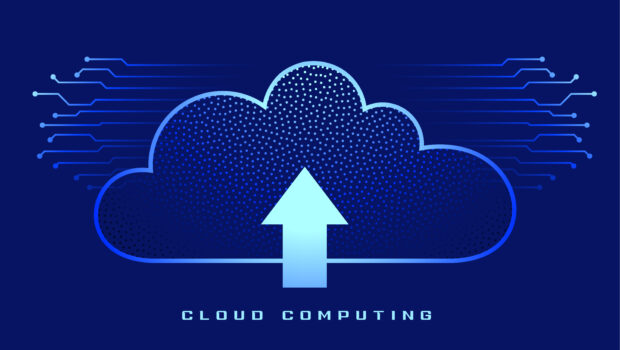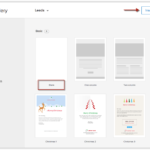9 Cloud Trends to Watch in 2022
The last few years have been quite difficult for the world economy. Starting from 2020 and the pandemic, professionals from over the globe have been facing numerous challenges in all spheres. The IT sector has done everything to cushion the blow and tried to expand the possibilities of the cloud ecosystem. The year 2022 will be no exception. The technology will continue to advance and be embraced at dizzying speed. In this article, we are going to talk about cloud trends to watch in 2022.

Automation of Infrastructure
Due to the current situation in the world, an increasing number of businesses are attempting to scale out to the cloud. Closed or unreachable offices, other circumstances have made developers feel the acute need to move, re-scale, or re-create their servers, relocating them from their on-premises services. The importance of infrastructure flexibility is impossible to underestimate now.

More and more companies increase their investments in cloud infrastructure, as it gives much more opportunities for their businesses.
So, infrastructure automation is the thing of the future, it saves time and effort, and allows for easy remote access from any place in the world.
Multi-cloud/ Hybrid Cloud Solutions
Another important cloud trend is a hybrid cloud system. It combines the features and functions of a public cloud platform with those of a private cloud. Workloads will often be moved from public to private clouds and back using such a system. Users will have more data sharing and access options as a result of this.
DevSecOps
Cloud computing allows consumers to handle their data in a simple and seamless manner. However, there are numerous security hazards involved. Cloud computing security threats include unlawful invasion, service denial attacks, network eavesdropping, virtualization vulnerabilities, cloud service misuse, and side-channel attacks.
Businesses nowadays are reluctant to use cloud computing because of concerns about data security. It’s here that DevSecOps comes into play providing infrastructure security at the highest level possible. By integrating controls and processes into its workflow, DevSecOps automates fundamental security tasks.
Client and user safety is critical to the long-term viability of cloud computing. The best way to ensure overall security is through the use of DevSecOps.
Cloud Service Mesh
Cloud platforms are extremely complicated. As a result, it’s vital that these platforms provide users with secure and quick means of communication. Users can benefit from a dedicated S2S (service to service) communication layer if you use a service mesh. This will result in a cloud platform that is both absolutely secure and dynamic.
A cloud platform’s service mesh is a must. Today, cloud ecosystems are still expanding and developing to meet the ever-changing demands of their users. Using a service mesh, you may meet these new standards and gain access to a variety of cloud platform rules.

The below chart shows that before 2011, only every second company provided their services in the cloud, while in 2021, 4 companies out of 5 started using cloud computing infrastructure.
Disaster recovery and backup
All kinds of data loss, system failures, and cyber attacks frequently threaten digitally integrated companies. System failure or a server crash leads to important data loss that causes a lot of problems for any business. That’s why disaster recovery and data backup are crucial cloud applications for preventing or minimizing such incidents and ensuring that company activities and infrastructure are safe.
A dedicated cloud solution for disaster recovery and backup is a solid backup and recovery strategy. The corporate system keeps track of documents electronically or virtually and stores them on an external cloud server.
Open-source tech platform
With the world’s changes, new opportunities for integration and collaboration appear. The adoption of open-source cloud services allows for the highest level of flexibility and convenience. This adaptable system can be customized to meet the specific needs of users. Businesses will benefit greatly, too. Such open-source cloud services provide a much faster scaling, plus it is more secure.

As you can see from the chart above, even 5 years ago respondents predicted a great increase in cloud workloads in the following 15 years. Having taken into consideration all recent events, we might put forward a hypothesis about a much faster transfer.
AI-based cloud platforms
Artificial intelligence (AI) is poised to become one of the most beneficial trends in cloud computing as it develops. AI is being used in Big Data processing in novel ways by technology companies. This seeks to improve the efficiency and output of corporate operations.
AI technologies and infrastructure in the cloud are intended to boost productivity. It is possible to control and automate internal processes with the help of artificial intelligence (AI). This architecture also makes it easier for them to scale and adapt to their ever-changing company requirements. It’s only a matter of time before cloud computing and artificial intelligence (AI) merge into a dominant trend.
Another vital function where AI in the cloud is making a huge difference in medical research. Powerful AI-managed machines are transforming healthcare every day and they will continue doing it. Surely, it will be impossible for resource-intensive research to use local servers, therefore moving to the cloud will be the only way to make use of this potential. Energy efficiency is a key issue that cloud service providers must address.

Edge Computing
Edge computing is a specific strategy of cloud infrastructure optimization. Using cloud servers, data that isn’t time-sensitive can be processed in real-time by edge computing and then archived for later use. Thus, as telecom and IT industries continue to merge, we’ll discover edge computing rise to prominence and open up a slew of new possibilities and solutions for businesses of all sizes. Edge computing is becoming increasingly important in providing real-time data analysis and information since the number of IoT devices continues to grow tremendously.

As shown in this chart, we can see the tendency of increasing the total share of cloud services worldwide. This rise can be traced in all sectors of functions and applications, but it is especially noticeable when it comes to cloud databases.
Cloud Database Trend

The above-mentioned events couldn’t but influenced also the way how databases are located. Having shifted from a structured and consistent on-prem storage, databases have eventually drifted to the cloud one. But is it any better?
First of all, it is much cheaper. Companies that have adopted cloud computing note that it is really cost-effective, as most of the cloud services used have a pay-as-you-go model. Secondly, cloud databases are more flexible and allow for mobile access which is vital for businesses with mobile teams.
So, what about cloud database trends to watch in 2022?
Auto-managed cloud databases
As opposed to self-managed cloud databases, auto-managed ones allow delivering features like automatic management, data modeling, etc. Enhanced by AI database operations like updating, optimizing, and upgrading are the goal of auto-managed databases. Additionally, businesses can recover faster from system crashes thanks to AI-based cloud databases. Automated data backups and system restores are commonplace in large corporations.
Internet Security
One of the key issues for any enterprise is its data security. To avoid the risks of system corruption due to the outdated mechanisms, various embedded techniques like Transparent Data Encryption are used. The importance and relevance of such security features are the reason why they will evolve and upgrade.
Bigger Share of Graph Databases
In comparison to standard relational databases, graph databases are an ultimate pick for storing data and better building relationships between data. Apart from that, graph databases can efficiently store massive clusters of relationships.
Massive Cloud Migrations
An increasing number of databases are being set up in the cloud or migrating there from on-premises environments. The ecosystems that are forming around cloud service providers are driving these rollouts and shifts. As a result, cloud service providers will integrate a wide range of products.
For databases for example deployed as as platform as a service offering across multiple availability zones, access would be achieved via a common endpoint URL. This means failovers and switchovers are transparent to client applications dependent on these databases. Database Engineers and others using tools like SQL Server Management Studio, MySQL Workbench, TOAD or SQL Complete can access their database instances transparently as well using these endpoint URLs.
Cloud-based services are extremely popular among businesses as companies want to increase their dynamism and mobility.
Conclusion
We have explored the newest cloud trends in 2022. Some of them are just predictions but having looked at the speed of cloud services evolving, everything is possible. Main cloud trends include more automation and serverless infrastructure adoption. Questions of cloud database security and customizable open-source platforms are very relevant and that’s why their solution is crucial for the whole IT industry.
Image by Freepik
















